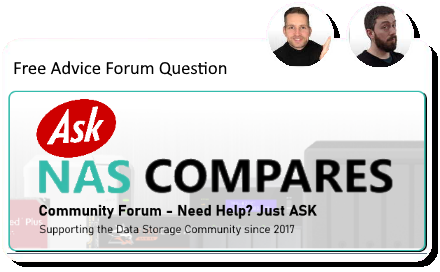08-15-2025, 07:24 PM
Since you’re already using a QNAP TS-453Be, you’re likely comfortable with QNAP’s QTS software ecosystem. For a replacement, I’d suggest looking into the QNAP TS-464 or TS-473A. Both offer quad-core processors, support for 2.5GbE (which is a big jump up from 100Mbps or even 1GbE), and allow for SSD caching and memory upgrades. These models strike a good balance between cost and performance, especially for environments like yours where reliability and speed matter more than huge capacity.
SSD caching can absolutely help in your use case, especially if you’re re-deploying the same packages often or pushing out large installers like Office 2024 or GPU drivers. Typically, two SATA SSDs in a read-only cache configuration will give you a big boost for frequently accessed files. Even something like 2 x 500GB SSDs would be enough for caching purposes, depending on how many packages you’re storing and pushing. QNAP makes it easy to set up caching via the GUI, and you can monitor cache hits to see how effective it is.
If you’re working with gigabit or 2.5GbE infrastructure on your campus, upgrading the NAS to support 2.5GbE or 10GbE (many models have PCIe slots for network card upgrades) will help even more with concurrent throughput. Also make sure your switch and main deployment server can handle the upgraded network speeds.
SSD caching can absolutely help in your use case, especially if you’re re-deploying the same packages often or pushing out large installers like Office 2024 or GPU drivers. Typically, two SATA SSDs in a read-only cache configuration will give you a big boost for frequently accessed files. Even something like 2 x 500GB SSDs would be enough for caching purposes, depending on how many packages you’re storing and pushing. QNAP makes it easy to set up caching via the GUI, and you can monitor cache hits to see how effective it is.
If you’re working with gigabit or 2.5GbE infrastructure on your campus, upgrading the NAS to support 2.5GbE or 10GbE (many models have PCIe slots for network card upgrades) will help even more with concurrent throughput. Also make sure your switch and main deployment server can handle the upgraded network speeds.





